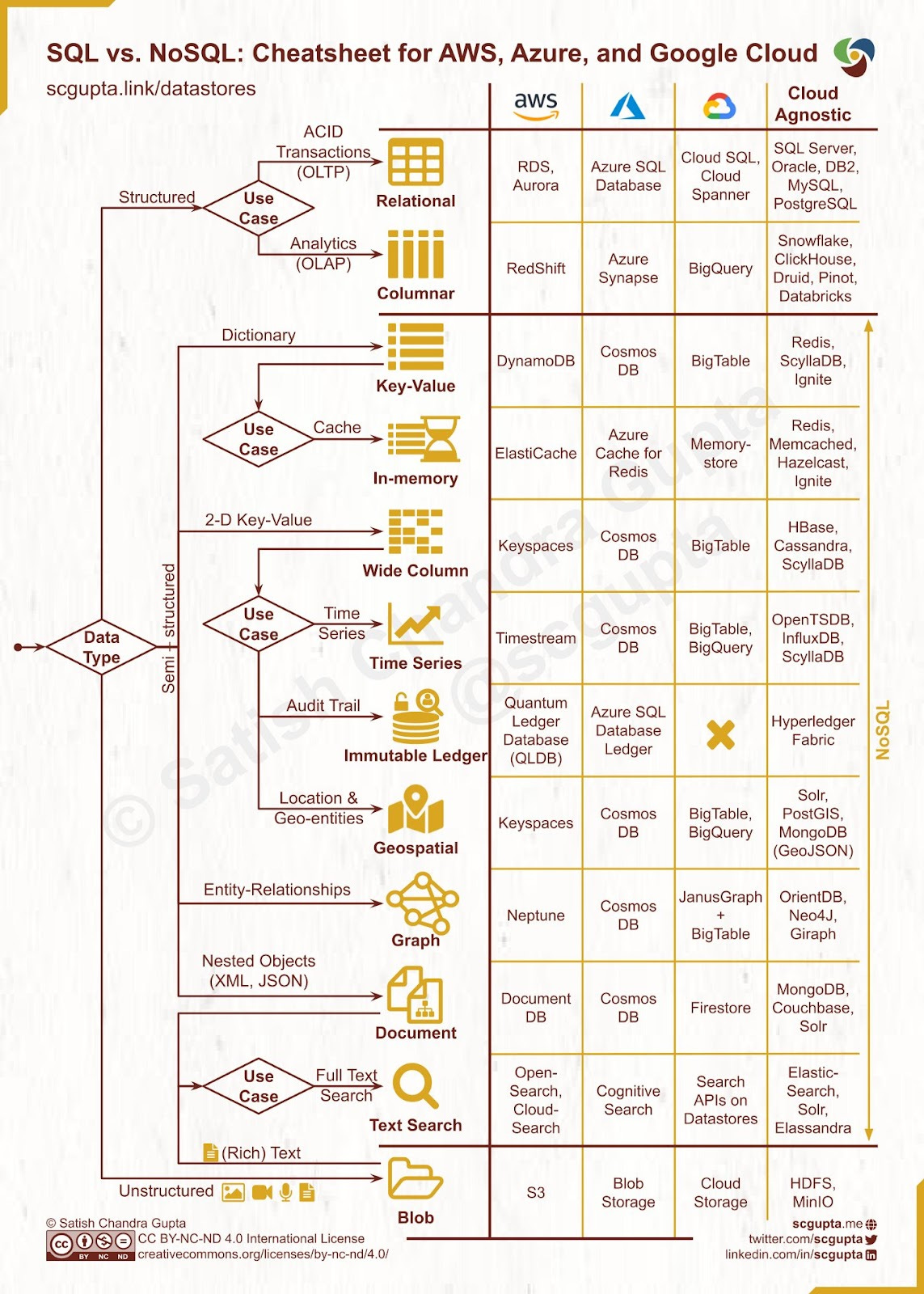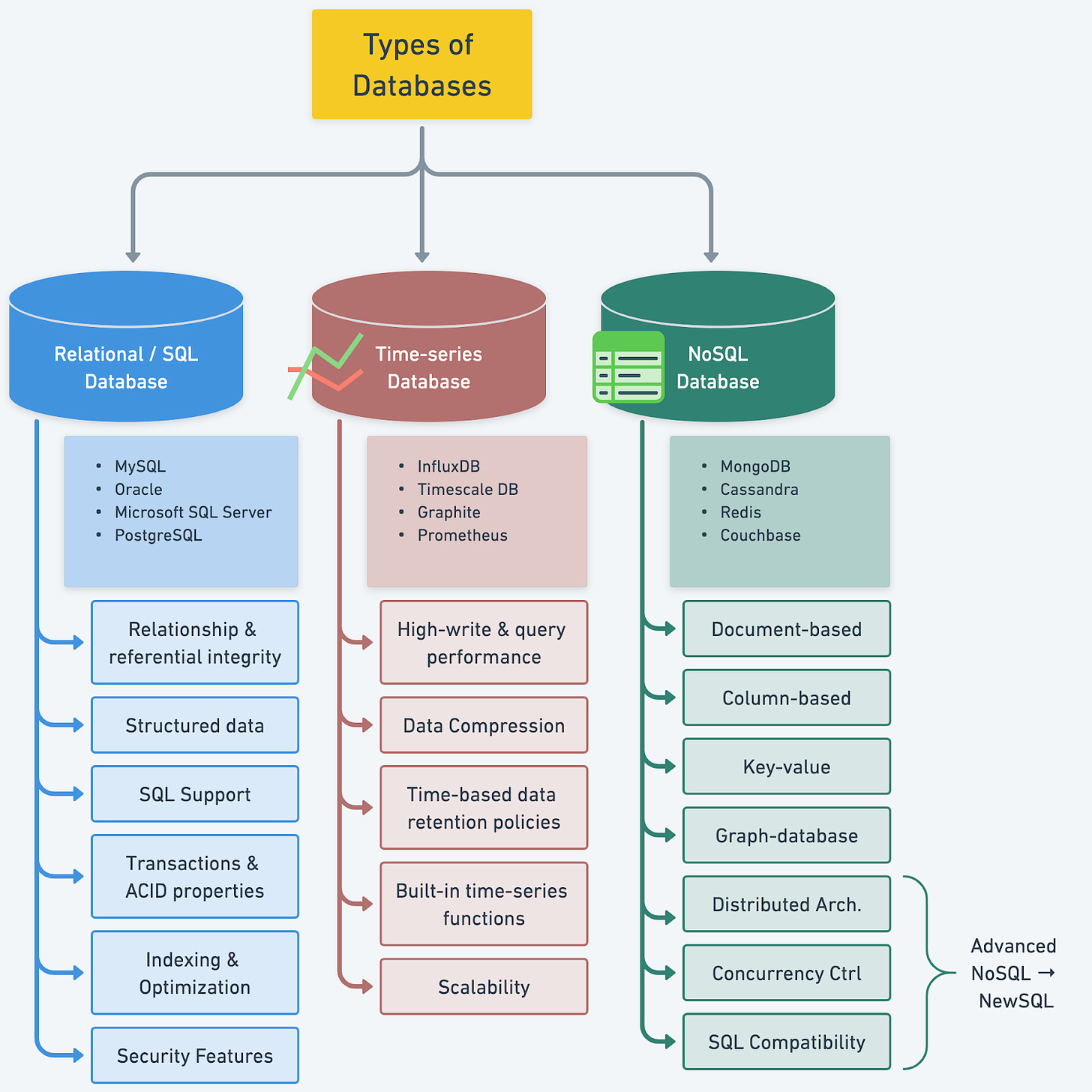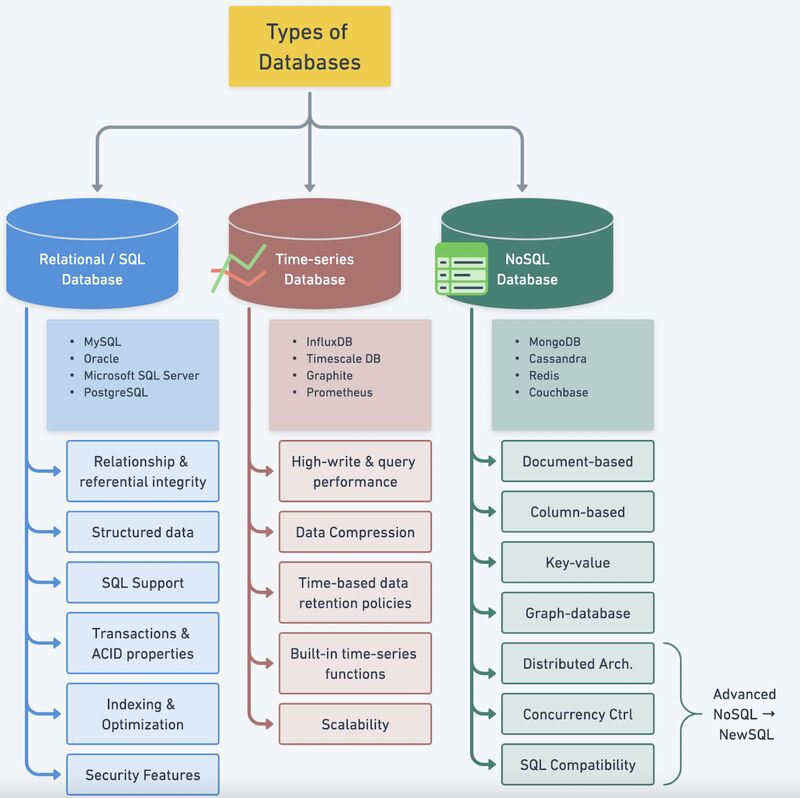The success of a software application often hinges on the choice of the right databases. As developers, we’re faced with a vast array of database options. It is crucial for us to understand the differences between these options and how to select the ones that best align with our project’s requirements. A complex application usually uses several different databases, each catering to a specific aspect of the application’s needs.

In this comprehensive three-part series, we’ll explore the art of database selection. We’ll arm ourselves with the knowledge necessary to make informed decisions when faced with the challenge of choosing databases for various components of our application. We will dive into the process of database selection, examining the various types of databases, discussing factors that influence database performance and cost, and guiding ourselves toward the best choices for our application while balancing essential tradeoffs.
Throughout the series, we’ll outline the key steps in the database selection process and review case studies that showcase successful database selection in practice. By the end of this series, we aim to empower ourselves with the knowledge and confidence needed to master the art of selecting the right combination of databases for our complex applications.

Understanding Database Types
To make the best decision for our projects, it is essential to understand the various types of databases available in the market. In this section, we explore the key characteristics of different database types, including popular options for each, and compare their use cases.

Relational Databases
Relational databases are based on the relational model, which organizes data into tables with rows and columns. These databases have been the standard choice for many applications due to their robust consistency, support for complex queries, and adherence to ACID properties (Atomicity, Consistency, Isolation, Durability). Key features and benefits of relational databases include:
- Structured data organization: Data in relational databases is stored in tables with a predefined schema, enforcing a consistent structure throughout the database. This organization makes it easier to manage and maintain data, especially when dealing with large amounts of structured data.
- Relationships and referential integrity: The relationships between tables in a relational database are defined by primary and foreign keys, ensuring referential integrity. This feature allows for efficient querying of related data and supports complex data relationships.
- SQL support: Relational databases use Structured Query Language (SQL) for querying, manipulating, and managing data. SQL is a powerful and widely adopted language that enables developers to perform complex queries and data manipulations.
- Transactions and ACID properties: Relational databases support transactions, which are sets of related operations that either succeed or fail as a whole. This feature ensures the ACID properties – Atomicity, Consistency, Isolation, and Durability – are maintained, guaranteeing data consistency and integrity.
- Indexing and optimization: Relational databases offer various indexing techniques and query optimization strategies, which help improve query performance and reduce resource consumption.
Relational databases also have some drawbacks:
- Limited scalability: Scaling relational databases horizontally (adding more nodes) can be challenging, especially when compared to some NoSQL databases that are designed for distributed environments.
- Rigidity: The predefined schema in relational databases can make it difficult to adapt to changing requirements, as altering the schema may require significant modifications to existing data and applications.
- Performance issues with large datasets: As the volume of data grows, relational databases may experience performance issues, particularly when dealing with complex queries and large-scale data manipulations.
- Inefficient for unstructured or semi-structured data: Relational databases are designed for structured data, which may not be suitable for managing unstructured or semi-structured data, such as social media data or sensor data.
Popular relational databases include MySQL, PostgreSQL, Microsoft SQL Server, and Oracle. Each of these options has its unique features, strengths, and weaknesses, making them suitable for different use cases and requirements. When considering a relational database, it is essential to evaluate the specific needs of the application in terms of data consistency, support for complex queries, and scalability, among other factors.


